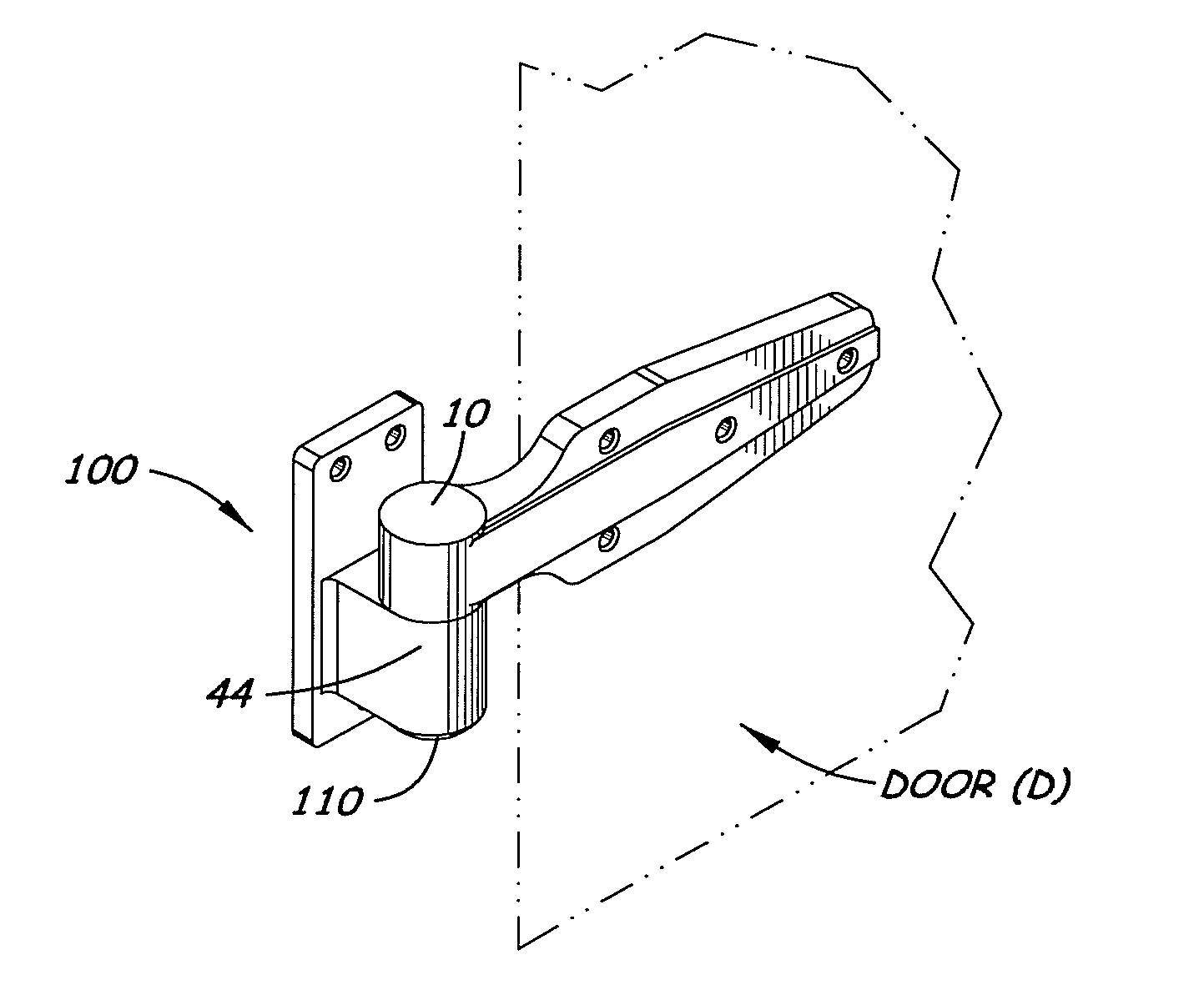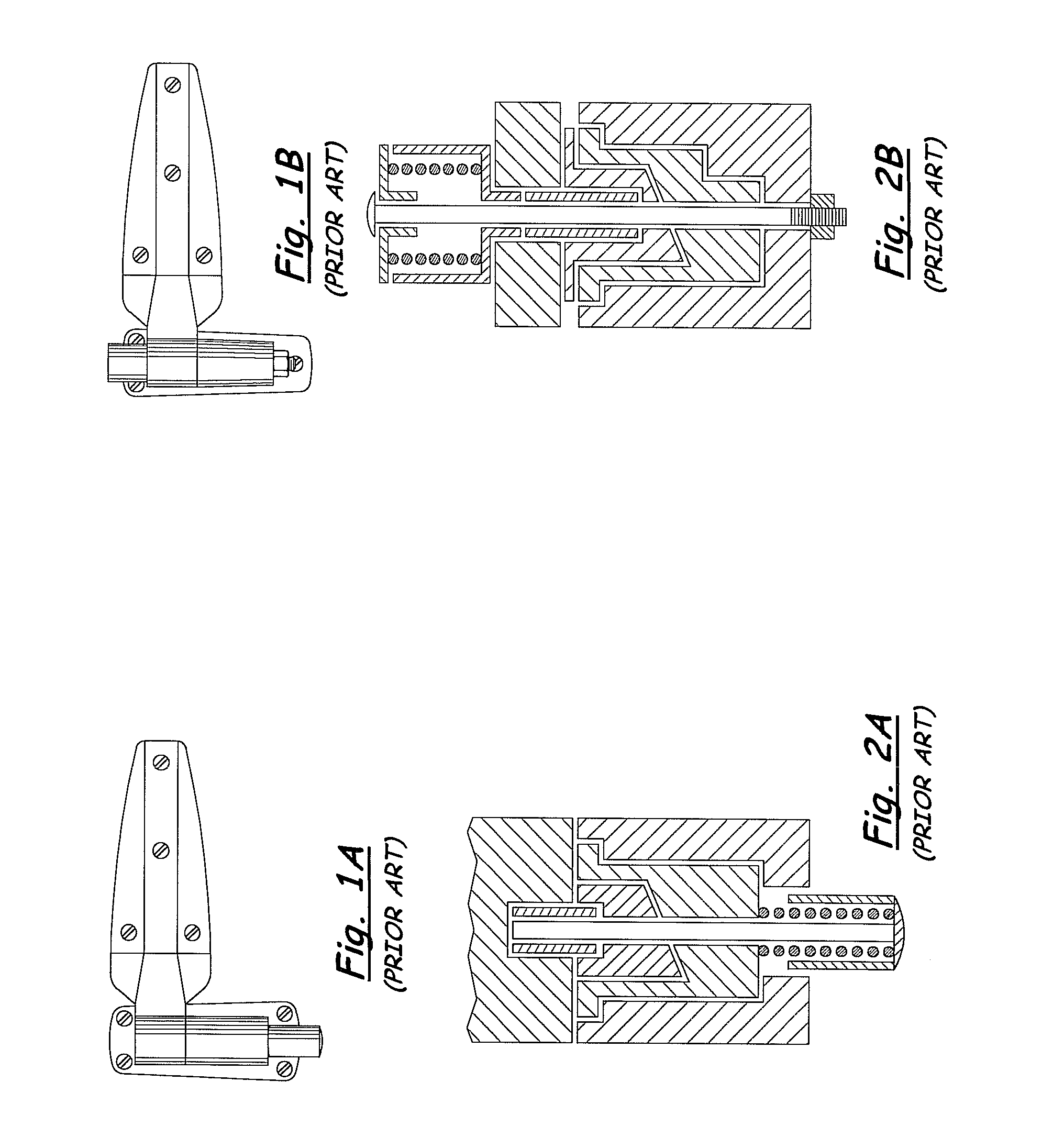Self-closing hinge
a self-closing, hinge technology, applied in the direction of wing openers, multi-purpose tools, constructions, etc., can solve the problems of not having enough momentum to latch on its own, affecting the door latching, so as to achieve the effect of reducing the compromising of the lift-off capability, ensuring the door latching, and adding functionality
- Summary
- Abstract
- Description
- Claims
- Application Information
AI Technical Summary
Benefits of technology
Problems solved by technology
Method used
Image
Examples
Embodiment Construction
[0031]Referring to the Figures, there are shown several prior art hinges and one, but not the only, embodiment of the invented self-closing hinge 100.
[0032]The preferred embodiment 100 of the invented self-closing hinge, as shown best in FIGS. 2C, 3A, 3B, 6 and 7, comprises fitting of an upper cam 2 inside of a lower cam 3, the lower cam 3 being formed into a generally cylindrical cup with an outwardly-extending flange 31 that hangs on a shelf 41 built into the housing 44 of the hinge base 4. The top surfaces of the two cams 2, 3 are preferably coplanar with lifting surface 11, which are near and parallel to the lower surface of the insert 8, and the lower surface of the blade 9 portion that surrounds the insert 8 (see FIG. 2C). This way there is no gap between housing 44 and blade 9 when the door is fully closed. Also, a notch 33 provided in the lower cam 3 is cut into the flange 31, and said notch mates with a similarly-shaped portion 45 on the housing 44 so that the lower cam 3 d...
PUM
 Login to View More
Login to View More Abstract
Description
Claims
Application Information
 Login to View More
Login to View More - R&D
- Intellectual Property
- Life Sciences
- Materials
- Tech Scout
- Unparalleled Data Quality
- Higher Quality Content
- 60% Fewer Hallucinations
Browse by: Latest US Patents, China's latest patents, Technical Efficacy Thesaurus, Application Domain, Technology Topic, Popular Technical Reports.
© 2025 PatSnap. All rights reserved.Legal|Privacy policy|Modern Slavery Act Transparency Statement|Sitemap|About US| Contact US: help@patsnap.com



